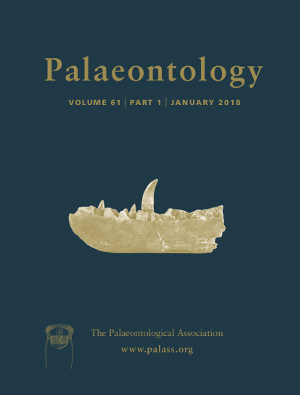Reg. Charity No. 1168330

Based on well‐preserved belemnites, the ontogenetic trajectories of septal spacing between succeeding chambers were analysed. In the examined species (Passaloteuthis laevigata, Parapassaloteuthis zieteni and Pseudohasitites longiformis) that come from Buttenheim, Germany, and Lixhausen, France, the ontogenetic trajectories of septal spacing follow exponentially increasing trends with no decreasing phase of septal crowding during the earliest ontogenetic stage. The absence of a decreasing trend at the earliest ontogenetic stage is a unique character in contrast with those in modern cuttlefish and ancient and modern nautiloids, in which the decreasing trends are related to hatching events. These ontogenetic septal spacing trends suggest that the belemnite hatchlings had only a protoconch with no chamber. These belemnite hatchlings with no chamber and therefore small embryonic shell diameter are similar to those of ammonoids. Significant difference in a statistical test that compared the protoconch size between the two localities, might suggest that there was limited transportation at the embryonic stage, although it could also just indicate differences in regional environmental conditions, age and/or degree of time averaging which might differ between the examined taxa.